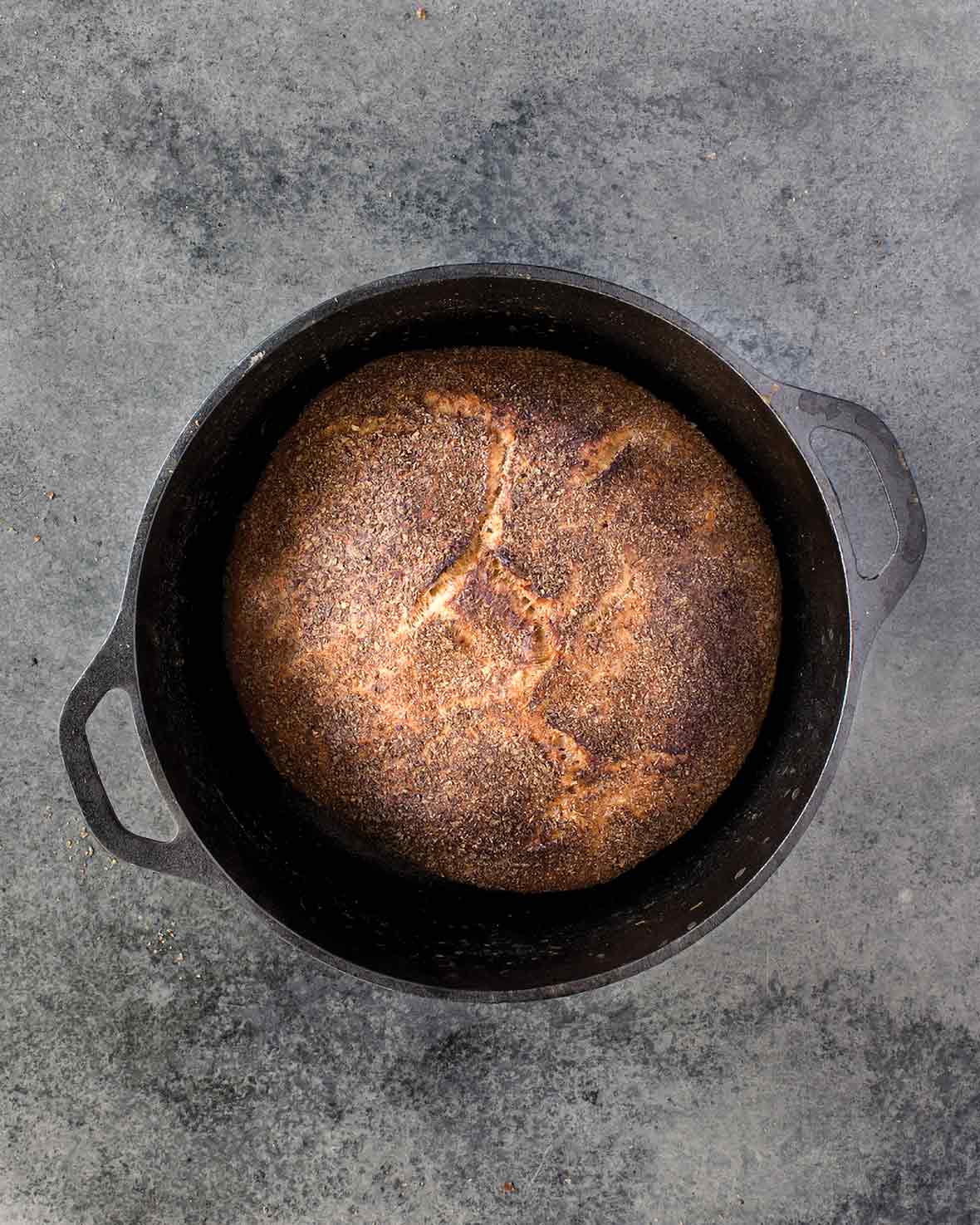
Featured Review
Fantastic easy recipe. Soooo tasty with a delicious crust. If you have never made bread before this is a great starting point.
Penny
Jim Lahey’s no-knead whole-wheat bread is a brilliant innovation that brings you healthfulness with ease. And that’s to say nothing of the nutty, not overly healthful taste. More of that, please.
More No-Knead Bread Recipes from Jim Lahey
Jim Lahey’s No-Knead Sourdough Bread
1 d 11 hrs 40 mins
Jim Lahey’s No-Knead Olive Bread
15 hrs 15 mins
Jim Lahey’s No-Knead Bread
15 hrs 30 mins
Once you’ve mastered Jim’s simple hands-off magic, you might be itching to explore more variations. For a bit of tang, why not try a tangy, no-knead sourdough loaf with that signature Lahey lilt? Perhaps you’re craving something with more punch? These skinny little stecca baguettes studded with tomatoes, olives, or garlic are perfect for snacking. If olives are your utter reason for living, there’s his wonderfully savory olive bread that practically makes itself. For those seeking to get back to basics, Jim’s original OG no-knead loaf, which started it all, is the place to begin.
Write a Review
If you make this recipe, or any dish on LC, consider leaving a review, a star rating, and your best photo in the comments below. I love hearing from you.–David
Featured Review
So I have revisited this recipe a few times recently and have fallen in love with it again. Making a few each week. Consumes zero time and it’s delicious. I have taken to 1 cup of wholewheat and 2 all purpose, plus seed and nut add-ins. Currently one in the oven with flax seed, sunflower seeds, crushed walnuts and raisins. Added an extra 1/3 cup of water and dough still seemed a bit drier than without any add-ins… Very versatile!
Annerieke
Want to Save This?
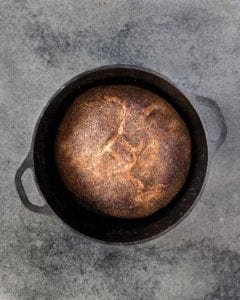
Jim Lahey’s No-Knead Whole-Wheat Bread
Ingredients
- 2 1/4 cups bread flour, plus more for the work surface
- 3/4 cup whole-wheat flour
- 1 1/4 teaspoons table salt
- 1/2 teaspoon instant or other active dry yeast
- 1 1/3 cups cool (55 to 65°F | 13° to 18°C) water
- Wheat bran, cornmeal, or additional flour, for dusting
Instructions
- In a medium bowl, stir together the 2 1/4 cups bread flour, 3/4 cup whole-wheat flour, 1 1/4 teaspoons table salt, and 1/2 teaspoon instant or other active dry yeast.
- Add the 1 1/3 cups cool (55 to 65°F | 13° to 18°C) water and, using a wooden spoon or your hand, mix until you have a wet, sticky dough, about 30 seconds.
- Cover the bowl and let it sit at room temperature until the surface is dotted with bubbles and the dough has more than doubled in size, 12 to 18 hours.
- Generously dust a work surface with flour. Use a bowl scraper or rubber spatula to scrape the dough onto the surface in 1 piece. Using lightly floured hands or a bowl scraper or spatula, lift the edges of the dough in toward the center. Nudge and tuck in the edges of the dough to make it round.
- Place a clean towel on your work surface and generously dust it with Wheat bran, cornmeal, or additional flour. Gently place the dough on the towel, seam side down. If the dough feels tacky or sticky, dust the top lightly with wheat bran, cornmeal, or flour.
- Fold the ends of the tea towel loosely over the dough to cover it and place it in a warm, draft-free spot to rise for 1 to 2 hours. The dough is ready when it is almost double in size. When you gently poke the dough with your finger, it should hold the impression. If it springs back, let it rise for another 15 minutes.
- About half an hour before you think the second rise is complete, preheat the oven to 475°F (245°C). Adjust the oven rack to the lower third position and place a 4 1/2-to-5 1/2-quart heavy Dutch oven or pot with a lid in the center of the rack.
- Using pot holders, carefully remove the preheated pot from the oven and uncover it. Unfold the tea towel and quickly but gently invert the dough into the pot, seam side up. (Use caution—the pot will be very hot.) Cover the pot and bake for 30 minutes.
- Remove the lid and continue baking until the loaf is a deep chestnut color but not burnt, 15 to 30 minutes more. The bread is done when it registers 200°F to 210°F (93°C to 99°C) on an instant-read thermometer.
- Use a heatproof spatula or pot holders to carefully lift the bread out of the pot and place it on a rack to cool thoroughly.
- Slice and…sigh.
Notes
Jim Lahey’s No-Knead Whole-Wheat Bread Variation
Seeded Whole-Wheat Bread You can make this sturdy whole-grain loaf even more substantial–and satisfying–when you consider pretending you’re German and tossing in a handful of walnuts or maybe some pumpkin and sunflower sesame seeds when mixing the dough. Consider it bread that sprecheksn the Deutch. Slightly More (Or Less) Hearty Whole-Wheat Bread You can easily adapt this whole-wheat bread recipe to turn out loaves that are a little less hearty by tweaking the proportion of all-purpose to whole-wheat flours. The recipe currently offers a 3:1 ratio, but feel free to nudge it slightly up or down, making it closer to 4:1 or even 2:1 (all-purpose : whole-wheat) depending on how pale or dense a loaf you like.Explore More with AI
Nutrition
Nutrition information is automatically calculated, so should only be used as an approximation.
Recipe Testers’ Reviews
This no-knead whole-wheat bread is so simple to make it has become my go-to bread recipe. (I rarely buy bread.) It has a chewy crust and a well-developed flavor.
When making bread with all whole-wheat flour and/or if adding bran, I’ve found adding about a tablespoon of any kind of sugar or syrup really helps jump-start the yeast; otherwise it must sit for considerably longer than 12 hours to finish the first rise.
My favorite thing about this recipe is that it lends itself very well to experimentation, I’m still trying to figure out what combination and proportion I like best!
This no-knead whole-wheat recipe makes it easy to turn out crusty loaves of chewy whole-wheat bread that will have you turning up your nose at supermarket bread in no time.
It also invites experimentation, begging to be tweaked with more or less whole-wheat flour and the addition of nuts and seeds (flax? sunflower? pumpkin?). Loaves of bread don’t last long in our house, so there are very few days now when we don’t have a bowl of dough rising on the counter.
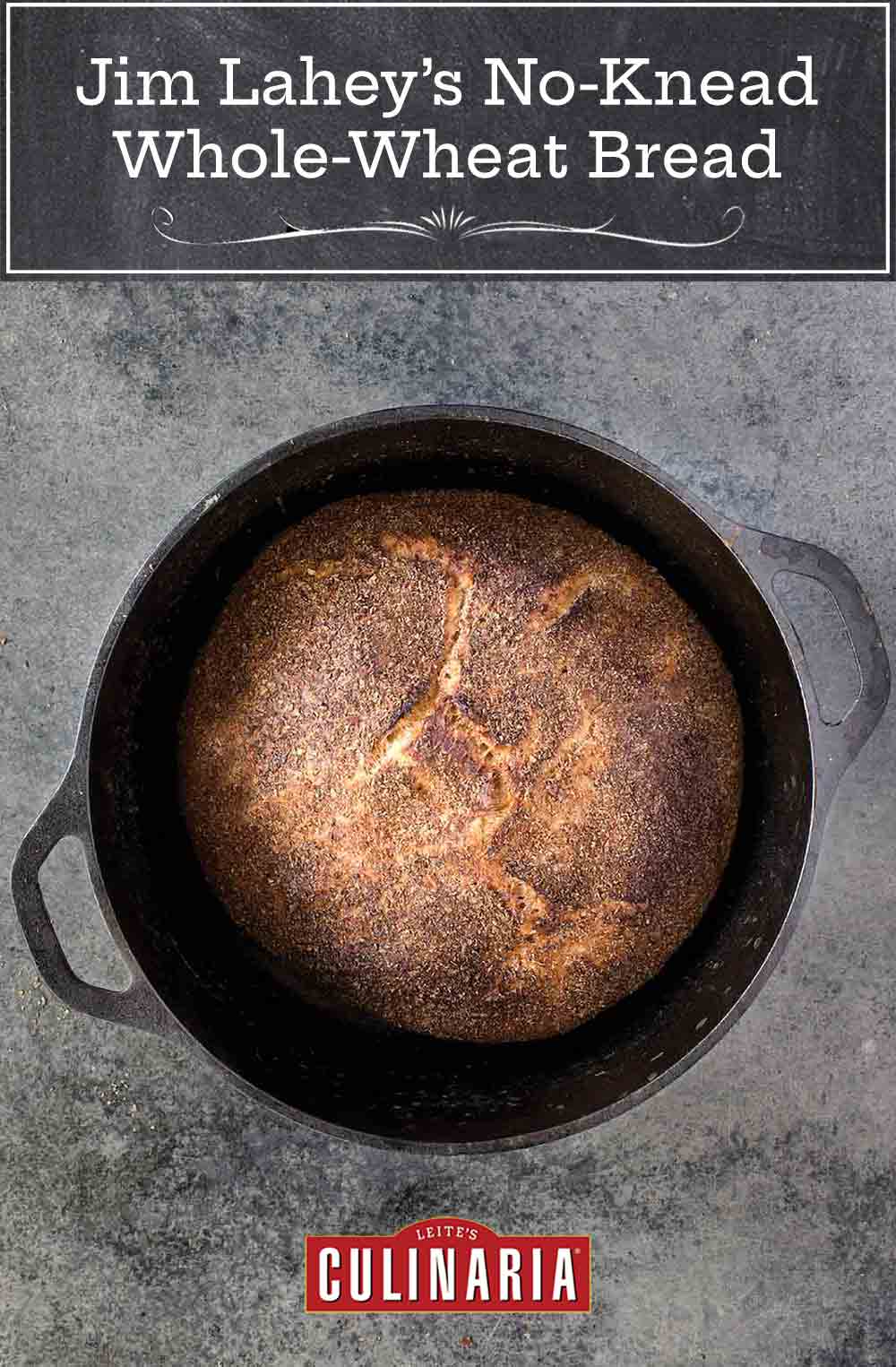
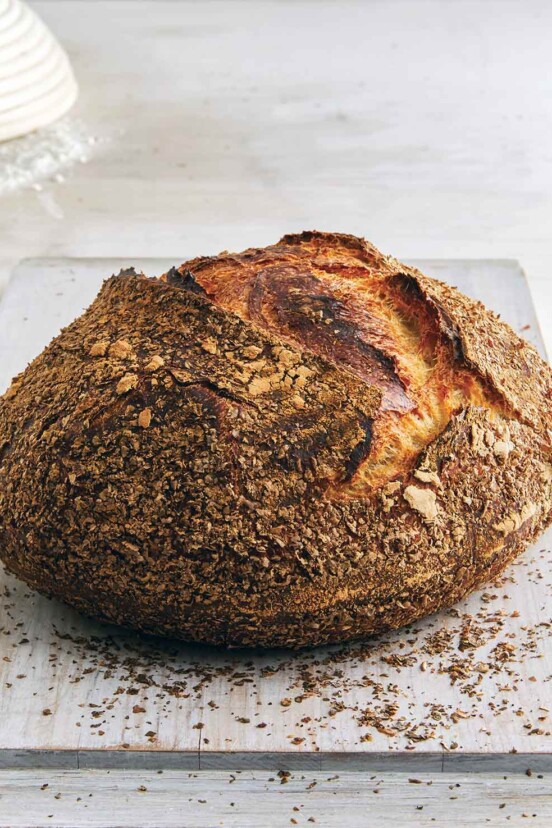
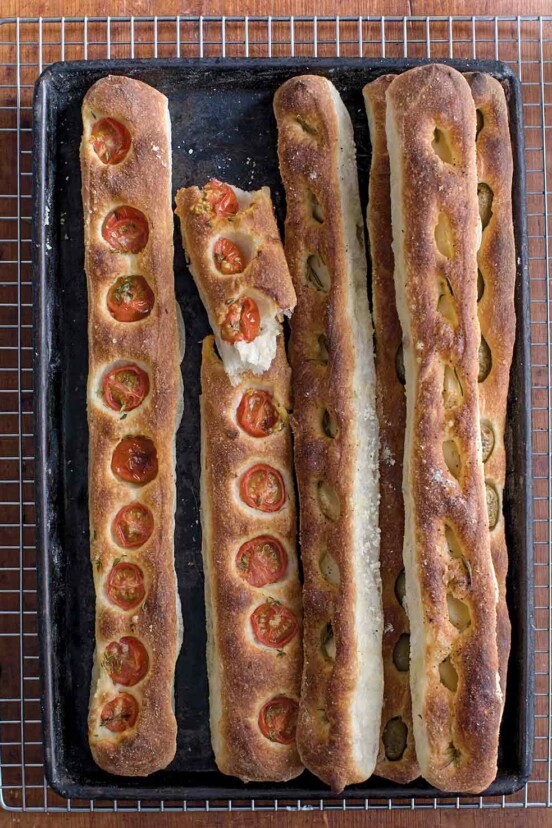
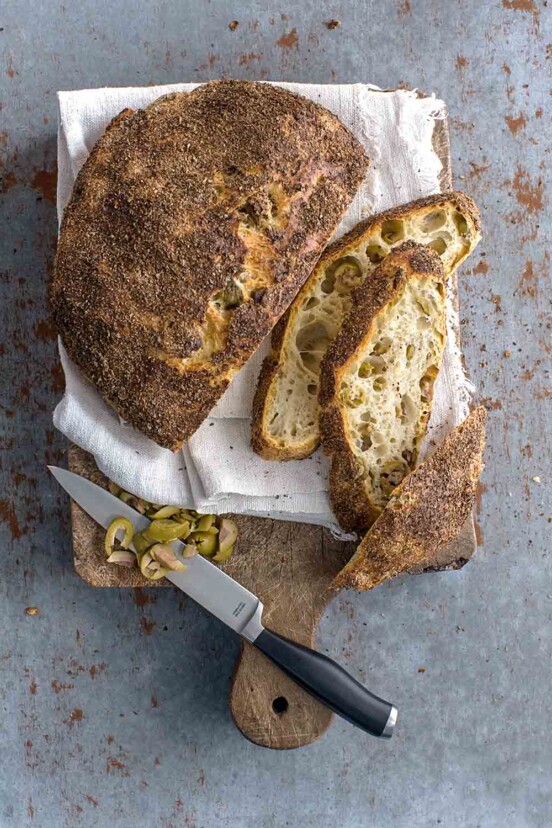
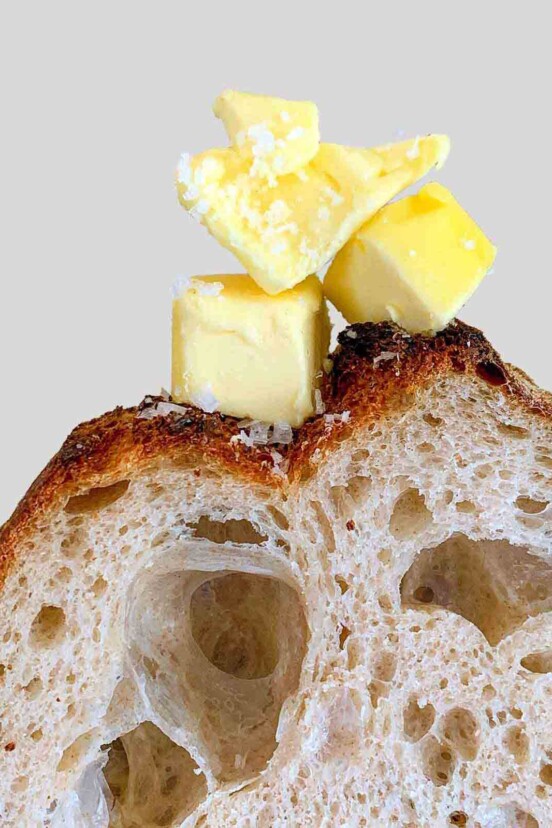










The first time I tried this recipe, the dough came together as a tough ball. I added water to make it the same wet consistency i’ve noticed when using the bread flour-only Jim Lahey no-knead bread recipe here on this site. I’m happy with the results (love is a better word) and have made this bread a few more times, but I am wondering if I should be using the amount of water that is written. I have tried both the metric and US versions with Gold Medal bread flour and Stone Buhr whole wheat.
Thanks, Malena. There are going to be variations in how much water you need depending on the type and brand of flour as well as where you live and the humidity, etc, so you definitely did the right thing by adding until you felt that you had the right consistency. We’re so glad that you love the results.
Will this bread bake successfully at only 400 degrees oven rather than 450 degrees?
NGK, the recipe calls for a temperature of 475°F. I don’t think you’d get the same results as the lower temperature. It’s doable, sure, but the loaf won’t get as brown and will need to bake longer to reach an internal temperature of 200°F.
This is a great recipe, def it is five stars. After making it successfully with whole wheat and all purpose flour I substituted stone ground sifted flour for the white. It is supposed to have some additional nutrient value, seems fresher and smells lovely. But it sucks in the moisture and even when I add more water doesn’t have the rise. Aside from adding more water and yeast can you suggest anything? Thanks again for the recipe.
We’re so glad you love this bread, Tricia, and kudos to you for working stone-ground flour in there! It’s unlikely you’re going to be able to get the same rise with stone-ground flour as you would with regular milled flour. The germ and bran that remain in stone-ground flour give it that lovely flavor and smell, but also hinder the development of the structure of the loaf, resulting in a denser bread. My only suggestion would be to play around with a mix of stone-ground and milled flour until you find a balance you love.